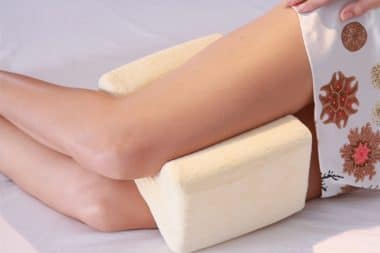The hamstring muscles are located on the back of the thigh and are actually three different muscles. They are powerful, spread across the back of the thigh and connect to the bones at the lower end of the pelvis and below the knee. They function to flex (bend) the knee joint and straighten the hip joint while walking.
The hamstring muscle group delivers power primarily during lower leg activities such as running, jumping or climbing. And consequently injuries to the hamstring muscle also happen during activities in which quick acceleration is required, such as sprinting. A torn hamstring can also happen with a direct blow to the muscle or when falling backward onto an object that hits the hamstring muscle.
Hamstring muscle injuries are common to all types of athletes from Olympic sprinters to slow-pitch softball players. Other sporting events where this type of injury is common include water skiing, ice skating, dancing, weight lifting and kicking sports.
Although these injuries usually heal with conservative care for it to return to full function and recovery to be complete it will need special attention and a rehabilitation program.
Most of the injuries happen in the area where the muscle and tendons join (musculotendinous complex). This muscle has a large musculotendinous complex which explains why hamstring injuries are so common.
During a strain, sprain or tear of the hamstring the muscle fibers are torn. A torn hamstring is a graded injury. In other words the severity of the injury is graded using a structured system. In a Grade 1 tear the injury is microscopic, the muscle is stretched too far and there is some bleeding within the muscle. You may be sore after a particular activity and require a couple of days off of sports. In a Grade 2 injury the muscle is a partial tear to one of the muscles in the group. This will result in an injury that causes you to limp for a week, have pain, swelling, tenderness and require treatment. In a Grade 3 injury the muscle is completely ruptured or torn. There will be significant pain, difficulty walking, pain, swelling and an immediate desire to visit your doctor.
When the muscle is injured the body releases chemicals to help with clotting and healing. The body will start to rebuild muscle tissue within a day after the injury. The rebuilding process takes weeks to complete depending upon the severity of the tear. However, if there was an avulsion, which means the muscle was torn completely from the bone, surgery may be necessary to make the repair.
*There are several factors that increase the risk of sustaining a torn hamstring. These factors include muscles that aren’t warmed up for the activity, poorly developed muscles, poor flexibility and low level of fitness. Athletes who have imbalanced muscle strength between the quadriceps and the hamstring muscle groups are also at higher risk to sustain a torn hamstring muscle.
When the injury happens the athlete will hear a pop and fall to the ground. The pain can be mild, moderate or severe depending upon the level of injury. Moderate injuries usually, but not always, have severe pain while a complete avulsion will be painful but also the athlete will lose function in the leg. Occasionally in a mild injury the athlete will feel tightness or pulling that can turn into a long standing problem when it isn’t allowed to heal appropriately.
The doctor will diagnose the problem through a thorough medical history and physical examination. The doctor will ask about your exercise schedule, activities, warm up, stretching routine and the story behind the injury. During the physical exam the doctor will flex and extend your leg while probing to find out exactly where it hurts. Imaging tests will be used to rule out an avulsion since a hamstring tear won’t show up on x-ray.
Your physician will recommend a treatment protocol to help heal the torn hamstring completely. When there is incomplete or improper healing it is more likely that the muscle will be reinjured easily. For the first week the goal is to decrease the swelling, pain and bleeding. This is the period where RICE is used liberally.
R stands for rest; I for ice; C for compression and E for elevation. Resting the leg means no exercise or workouts; don’t take the stairs or do more walking than necessary. This isn’t the time to go for a day long shopping excursion. Ice your muscle from the hip to the knee no matter where the pain is located. Do it for 20 minutes 3 times each day. Elevate the leg as able during the day and use a bandage to provide support if it feels better.
Your doctor may also prescribe a short time of a NSAID or non-steroidal anti-inflammatory medication such as ibuprofen. This will help relieve the swelling and pain.
In cases where there is an avulsion, or the muscle is pulled completely from the bone, a surgical repair is necessary to reattach the muscle to the bone. When the muscle is torn from the bone it contracts further down the leg and scar tissue can form around the torn end of the tissue. These factors make a surgical repair more complicated, especially when the repair is delayed.
Whether the treatment is conservative or surgical there should be a physical rehabilitation program with a physical therapist or trainer. They will prescribe a stretching and strengthening routine that will help your muscles to regain their previous strength and flexibility. Early rehabilitation is often done in a swimming pool because there isn’t any weight bearing to the joints and muscles. Later you may choose to do cardiac and muscle strengthening in the pool to return to your previous level of activity by running and walking in the pool.
Plan to continue the stretching and strengthening to reduce the risk of re-injuring the muscle. A re-injury after a torn hamstring is common when the healing isn’t complete or is improper.






Reply